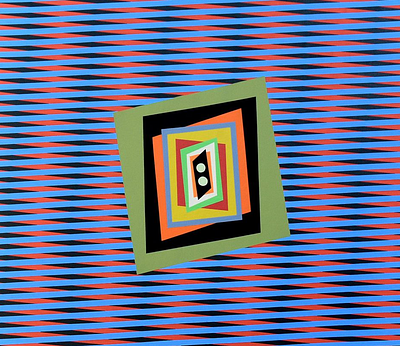"ANTONI CLAVÉ I SANMARTÍ (Barcelona, 1913 - Saint Tropez, France, 2005). ""Red and black composition"", circa 1962. Oil and gouache on lithographed pa
Lot 136
About Seller
Setdart Auction House
Carrer Aragó 346
Barcelona
Spain
Setdart Subastas was born in 2004 and is currently the first online art auction in Spain with solidity, prestige and reliability guaranteed by our more than 60,000 users. Setdart has a young, dynamic and enterprising team ready to successfully manage the purchase and sale of art works through custom...Read more
Categories
Estimate:
EUR€16,000 - EUR€18,000
$16,842.11 - $18,947.37
Absentee vs Live bid
Two ways to bid:
- Leave a max absentee bid and the platform will bid on your behalf up to your maximum bid during the live auction.
- Bid live during the auction and your bids will be submitted real-time to the auctioneer.
Bid Increments
| Price | Bid Increment |
|---|---|
| EUR€0 | EUR€10 |
| EUR€200 | EUR€25 |
| EUR€500 | EUR€50 |
| EUR€1,000 | EUR€100 |
| EUR€3,000 | EUR€200 |
| EUR€5,000 | EUR€500 |
| EUR€10,000 | EUR€1,000 |
| EUR€20,000 | EUR€2,000 |
| EUR€50,000 | EUR€5,000 |
About Auction
By Setdart Auction House
Dec 15, 2021
Set Reminder
2021-12-15 07:00:00
2021-12-15 07:00:00
America/New_York
Bidsquare
Bidsquare : Contemporary and Actual Art
https://www.bidsquare.com/auctions/setdart-auction-house/contemporary-and-actual-art-7967
Setdart Auction House sofia@setdart.com
Setdart Auction House sofia@setdart.com
- Lot Description
"ANTONI CLAVÉ I SANMARTÍ (Barcelona, 1913 - Saint Tropez, France, 2005). ""Red and black composition"", circa 1962. Oil and gouache on lithographed paper mounted on canvas. Attached certificate issued by the Archives Antoni Clavé. The work is registered in the Archives Antoni Clavé, Paris. No : 62TMPMT18. Signed in the lower right corner. Measurements: 57 x 77 cm; 67 x 87 cm (frame). On a dark background the intensity of the red stands out, reaching a contrast of colors, which brings vivacity to the composition and awakens the viewer's gaze. Through the play between red and black, a resource often used by Antoni Clave, the artist deploys a whole set of elements, apparently random, that come together to form a baroque composition. Antoni Clavé is one of the most relevant figures of Spanish contemporary art. Trained at the Escuela de Bellas Artes de San Jordi in Barcelona, Clavé was initially dedicated to advertising graphics, illustration and decorative arts. In 1936 he took an active part in the Civil War, in the Republican ranks, which led him to go into exile in France at the end of the war. That same year, 1939, he exhibits the drawings he made on the battlefields. He settled in Paris, where he met Vuillard, Bonnard and Picasso. From this period on, Clavé began to develop a work marked by a different, less classical plastic art. During this period his figures began to lose precision and form, giving way to the stroke and a personal range of colors and textures that would be the protagonist of his works from then on. He already enjoyed great international prestige at the time when he began to be recognized in Spain, after his exhibition at the Gaspar Gallery in Barcelona in 1956. In the sixties he made a tribute to El Greco, and his painting of this time reveals the influences received from that master, as well as from the Baroque painters. Of special relevance is the theme of the knight with his hand on his chest, a reference that will be repeated in Clavé's future works. This period is characterized by the definitive step towards abstraction. In the seventies Clavé's work continued to evolve, using diverse techniques such as collage, and inventing new ones such as ""papier froissé"", the result of a chance use of aerosol on crumpled paper. In 1978, the National Museum of Modern Art in Paris, now the Georges Pompidou Center, dedicated a retrospective to him that made him one of the most prestigious artists of his generation. His latest works are characterized by the recreation of textures within abstraction, with a profuse use of ""papier froissé"". He was awarded prizes at the Hallimark in New York in 1948, at the Venice Biennial in 1954 and at the International Biennial in Tokyo in 1957. In 1984 the Spanish State recognized his artistic value with the exhibition of more than one hundred of his works in the Spanish pavilion at the Venice Biennale. That same year he was awarded the Gold Medal of the Generalitat de Catalunya. Clavé's work can be found, among many others, in the Bilbao Fine Arts Museum, the Tate Gallery, the Modern Art Museum in Paris and Tokyo, the British Museum and the Reina Sofía Museum in Madrid."
- Shipping Info
-
In-house shipping available. Please inquire at admin@setdart.com.
-
- Buyer's Premium



 EUR
EUR CAD
CAD AUD
AUD GBP
GBP MXN
MXN HKD
HKD CNY
CNY MYR
MYR SEK
SEK SGD
SGD CHF
CHF THB
THB

















